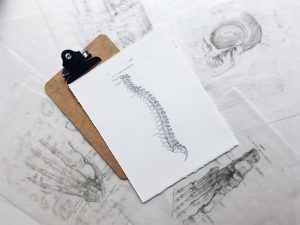Dry needling is a specialised, evidence-based technique used by trained physiotherapists to treat muscular problems, reduce pain, and optimise performance at a cellular level. During a dry needling procedure, hair-thin needles are expertly applied to problem areas in the musculoskeletal system. These needles are pushed through the skin to stimulate the specific muscular trigger points that may be causing you pain or discomfort.
Problem points may include hard knots in the muscle or irritable, tender, or tight points that make it difficult for you to perform everyday tasks. Dry needling may also be used to counteract muscular neck and shoulder pain (caused by a hunched back, for example) to accelerate active rehabilitation or to help revive fatigued muscles following strenuous exercise.
What does dry needling do?
Dry needling is scientifically proven to address a number of physiological issues including pain, stiffness, and muscle spasm. It is also effective in the treatment of musculoskeletal problems such as poor posture and mobility. When administered by a trained professional, dry needling can:
- release or manage pain
- relax tight muscles
- treat ligament issues, such as ankle strain or sprain
- reduce muscular swelling
- help to correct poor posture and alignment
- stimulate tissue repair in chronic tendon problems, such as tennis elbow
- relieve overworked muscles and aid sports injury recovery
Dry needling can also be effective in the relief of more general conditions, including:
- fatigue or chronic tiredness
- nausea
- chronic headaches
- migraines
- menstrual cramps or pain
- stress
Additionally, dry needling can be used to promote blood flow and healing or to desensitise a particular area of the body.
How does dry needling work?
Dry needling penetrates the injured tissue directly — the needles are applied right into the trigger points or problem areas. This has both biomechanical and mechanical effects.
Typically, a sterilised needle — which is only a few centimetres long — is inserted into a specific spot in the body, normally a knot or a hyper-irritable spot in the muscle. These trigger points may have become too tight to return to their relaxed state. They may also be compressing the nerves and capillaries that supply them, resulting in difficulty of movement, discomfort, or pain.
During dry needling, the needle penetrates under the skin to reach connective tissues and taut points within the target muscle. This triggers a ‘twitch response’ at a myofascial level. Sensory nerves under the skin and in the muscle itself are stimulated, producing feel-good endorphins that help to relieve tension and pain. This also helps to restore the muscle back to its normal function.
Is dry needling painful?
You may feel a little sting when the needle is inserted, and a twitch response sometimes feels like a shooting sensation. This shouldn’t last long. However, it is common to feel some residual aching or muscle soreness on the day of the treatment. Most patients don’t experience much significant pain during a dry needling treatment, and ease of stiffness and symptoms may occur immediately.
What is the difference between dry needling and acupuncture?
Dry needling and acupuncture are both therapeutic practices that use very thin needles to puncture the skin. Both procedures can provide pain relief, but they use very different methods.
Acupuncture is a form of traditional Chinese medicine that focuses on targeting meridians — energy pathways that run through the body. It is based on the belief that our bodies can be healed when our healing energy — or chi — is released.
By contrast, dry needling is a more modern therapeutic treatment that’s based on research and targets specific anatomy. It is commonly used for pain management and sports rehabilitation, whereas acupuncture aims to cleanse the lymphatic system or release toxins from the body.
Find out more
Our physiotherapists are highly trained in dry needling. If you would like to learn more about this treatment technique, please visit our Dry Needling service page.
CALL NOW TO BOOK YOUR APPOINTMENT

